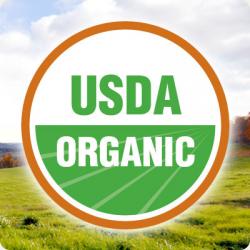One of the most common questions we get asked in the nutrition field is what does organic mean and is it really worth the price of buying organic?
Simply put, originally, all foods were “organic.” We took the time to grow and prepare foods without pesticides, herbicides, chemical fertilizers, hormones or irradiation. Foods were not refined and they were minimally processed. Unfortunately, to keep up with supply and demand and of course to chase after that good old American dollar, times have changed. So now we must pay more money to buy foods in their natural state that are labeled “organic.” Sound unfair to you? Well, you are not alone. This is why it is important to learn and understand what you can do to make a change and to keep yourself and your family healthy. And while doing this, understanding where to spend your hard earned dollars as you navigate on a budget.
The definition of organic is food grown and processed using no synthetic fertilizers or pesticides. Choosing to buy organic means that you are reducing your exposure to pesticides and fertilizers. This is in fact very important in sustaining maximum health. Pesticide exposure has been associated with an increase in cancer risk and kidney, liver and blood diseases, and it taxes the immune system. In a nut shell these toxic chemicals accumulate in tissues in the body and microbes in the gut, negatively effecting the immune system, leading to a variety of health problems. We will save all the info on the dangers of pesticides and herbicides for another blog post and focus instead on what simple steps you can start taking today to start avoiding them.
It is important to know that when you see the USDA Organic or Certified Organic seal on your food then you are indeed getting an organic product. This seal means that the contents of that food should be 95% or more certified organic. According to the United States Department of Agriculture, foods should be free of synthetic additives such as pesticides, chemical fertilizers, dyes and cannot be processed using solvents, irradiation or genetic engineering. The other 5% of the food must be found on an approved list.
The good news. The Environmental Working group (EWG) publishes an annual rating of conventional foods with the most and least pesticide residues to help fill the void left by the U.S. Environmental Protection Agency. According to the EWG “ the U.S. Environmental Protection Agency has failed to inform the public that they have a right to know about the risks of pesticide exposure and how pesticides can be reduced in the everyday diet of Americans.”
Not all produce items are considered equal when it comes to pesticide amounts. If you have a limited budget to spend on organic produce your best bet is to buy foods from the “Dirty Dozen” list in the organic form. These foods have the highest pesticide residue. Foods on the “Clean Fifteen” list are foods with the lowest amount of pesticides and the conventional version can be bought. This list is created and updated yearly by the EWG (Thanks EWG!) You can find this list on their website and download the “Dirty Dozen” app to your smart phone to have this list with you on the go (http://www.ewg.org/foodnews/list.php ).
Dirty dozen (Give or take a few)
You can lower your pesticide intake by avoiding these 14 most contaminated fruits and veggies conventionally grown and purchasing them organically:
- Apples
- Strawberries
- Grapes
- Sweet Bell Peppers(Red)
- Celery
- Peaches
- Spinach
- Nectarines(imported)
- Cucumbers
- Potatoes
- Cherry tomatoes
- Hot peppers
- Kale/Collard Greens
- Snap peas
Clean Fifteen:
These foods are on the safe side to buy conventionally:
- Avocados
- Corn (although try to avoid GMO corn)
- Pineapple
- Cabbage
- Sweet Peas-frozen
- Onions
- Asparagus
- Mangoes
- Papayas
- Kiwi
- Cantaloupe
- Cauliflower
- Grapefruit
- Eggplant
- Sweet potatoes
Stay tuned for more info on our hot topic of organic foods. Next manic organic food focus: animal products and local food sources.
Yours in Health & Happiness,
Lisa & Nichole


No comments:
Post a Comment